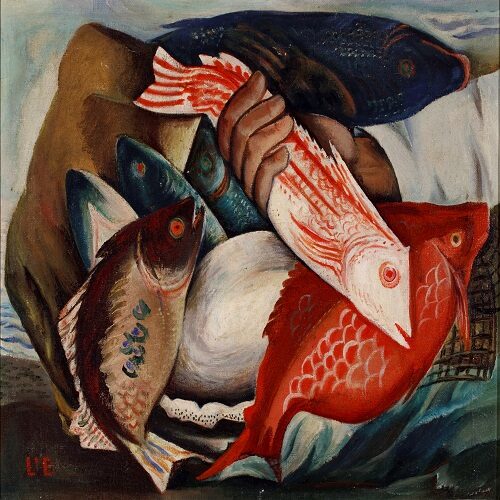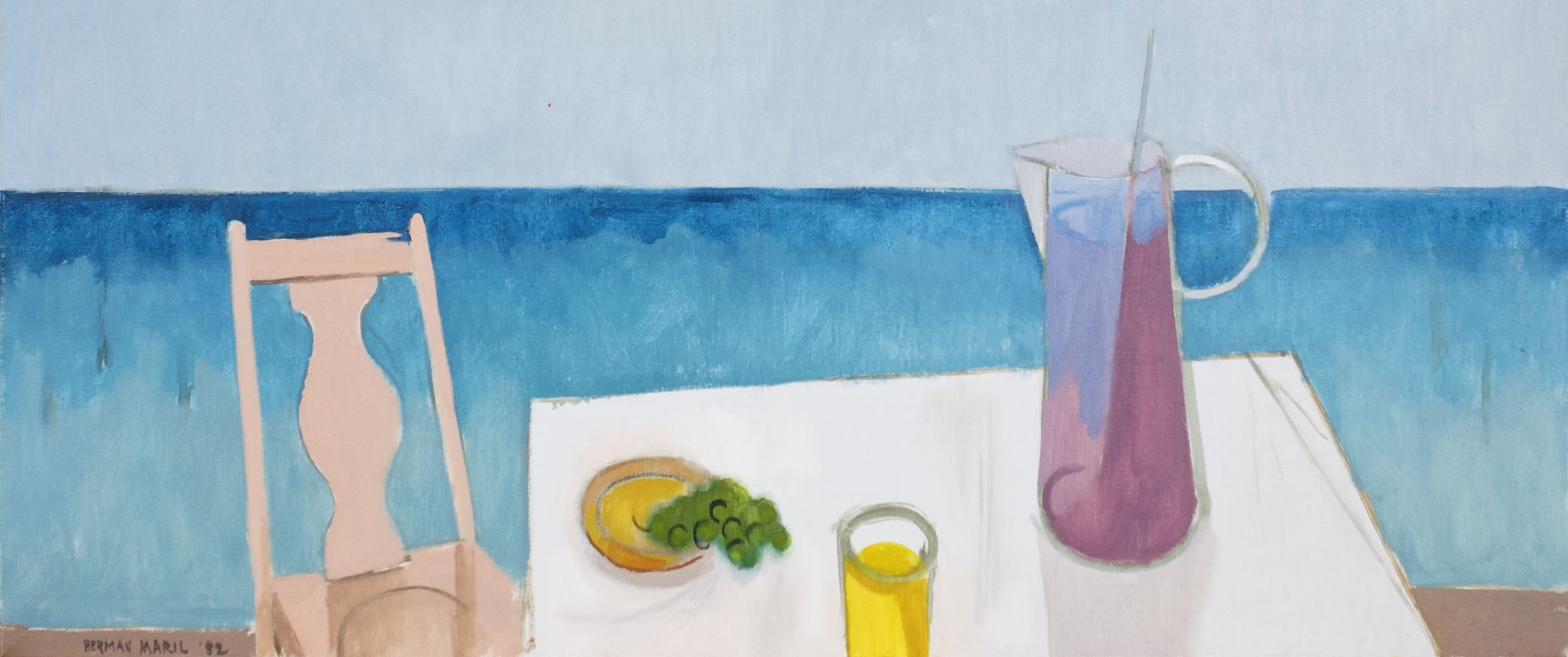
William L’Engle (1884-1957)
Fish Composition, 1940
Oil on canvas
16 x 20 inches
Collection of the Provincetown Art Association and Museum
Refreshments at the Sea: American Artists on Cape Cod
June 21 – October 1
This summer, the Cahoon Museum of American Art will present Refreshments at the Sea: American Artists on Cape Cod, a survey of art related to Provincetown, Massachusetts. On view from June 21 through October 1, 2023, this exhibition explores the story of the Provincetown art colony with thirty-seven examples of painting, works on paper, and sculpture from the 19th century to the present. Featured artists include Milton Avery, Charles Hawthorne, Henry Hensche, Blanche Lazzell, Lucy L’Engle, and Herman Maril.
For more than a century, American artists have been drawn to Provincetown, the remote town, surrounded by sea, at the outermost end of Cape Cod. With a free and open atmosphere and away from the big city bustle of Boston and New York, Provincetown became a cultural hub for artists and a major international center in the development of modern art. Refreshments at the Sea highlights artwork from the collection of the Provincetown Art Association and Museum, which continues to document and anchor the oldest continuous arts colony in the nation.
Refreshments at the Sea is organized in partnership between the Cahoon Museum of American Art and the Provincetown Art Association and Museum and is co-curated by Cahoon Museum executive director, Sarah Johnson and PAAM CEO, Christine McCarthy. “This exciting collaboration puts Cape Cod’s art and culture in the spotlight. The carefully chosen artwork from Provincetown Art Association and Museum’s vast collection reveals the depth of Provincetown’s creative talent and international reach as a place of importance in the history of art, says Johnson, “It has been thrilling to work with Chris McCarthy, who is an extraordinary resource on Provincetown’s art and artists.”
The exhibition examines the development of Provincetown’s art movements told through the stories of artists, who were influenced by each other as well as by the unique geography and history of the place. In the 18th and 19th centuries, Provincetown was a small coastal village centered around the waterfront’s fishing and whaling industries.
More than just a scenic location, Provincetown became ‘the place to be’ as a premier art colony. Beginning in the 1890s, the quaint village began to draw a resident population of writers and artists, as well as a summer tourist industry. In 1898, artist Charles Webster Hawthorne opened the Cape Cod School of Art, the first outdoor school for figure painting, which grew into one of the nation’s leading art schools. By the early 20th century, the community had acquired an international reputation for a blossoming artistic and literary culture.
Many European exiles and émigrés found refuge and community on Cape Cod in the welcoming Provincetown art community in the early to mid-20th century. Its open atmosphere fostered collaboration, creative exchange, and experimentation. Over the years, and continuing to this day, artists -some in a single summer, others through a lifetime spent by the sea- find inspiration in the creative culture and landscape of Provincetown.

